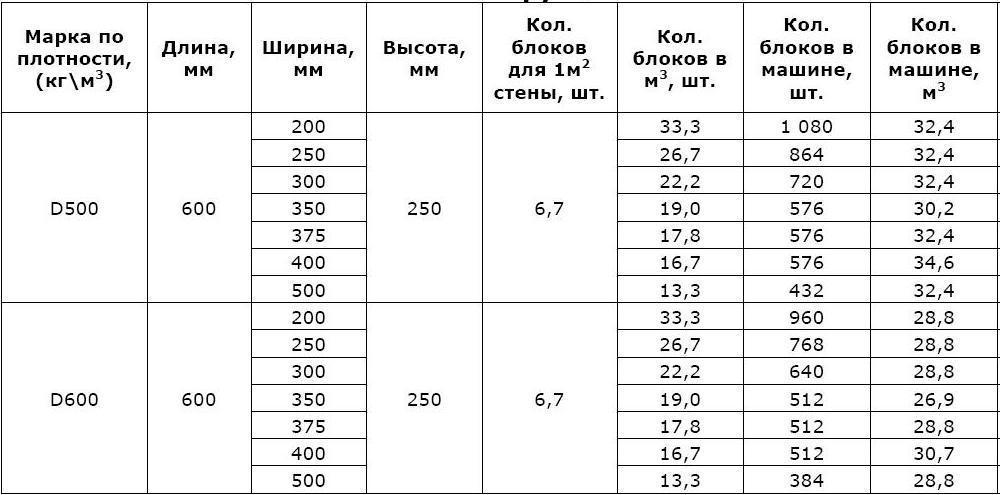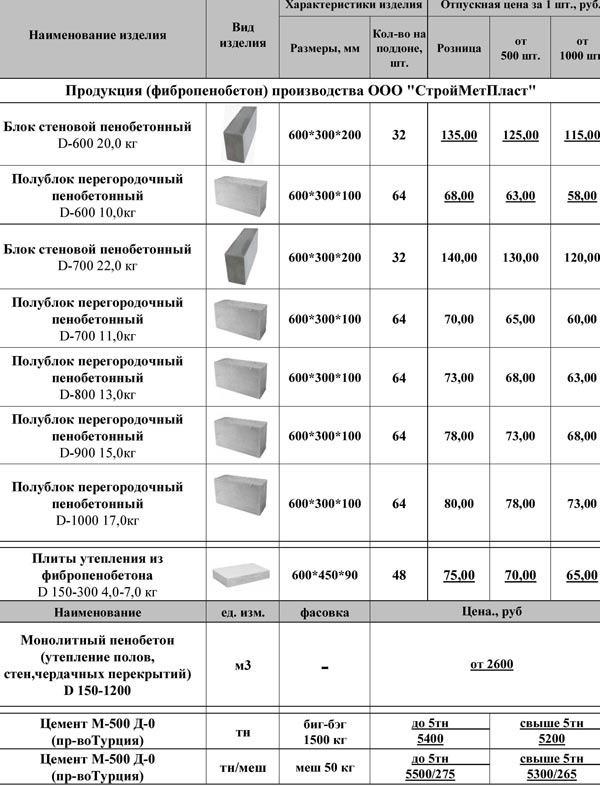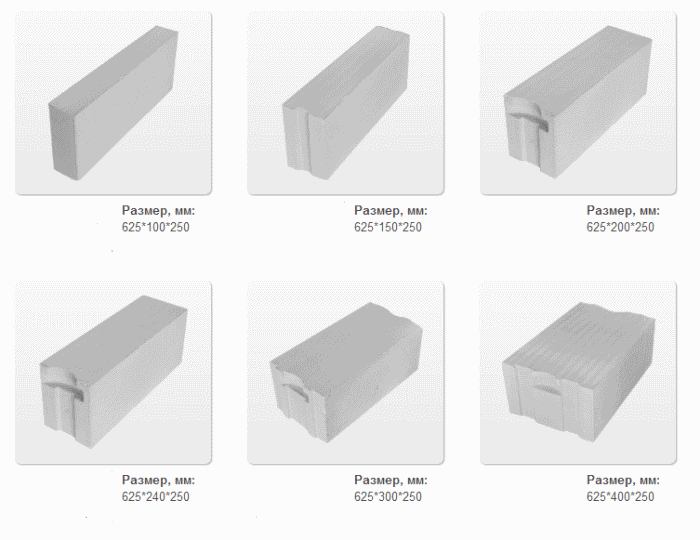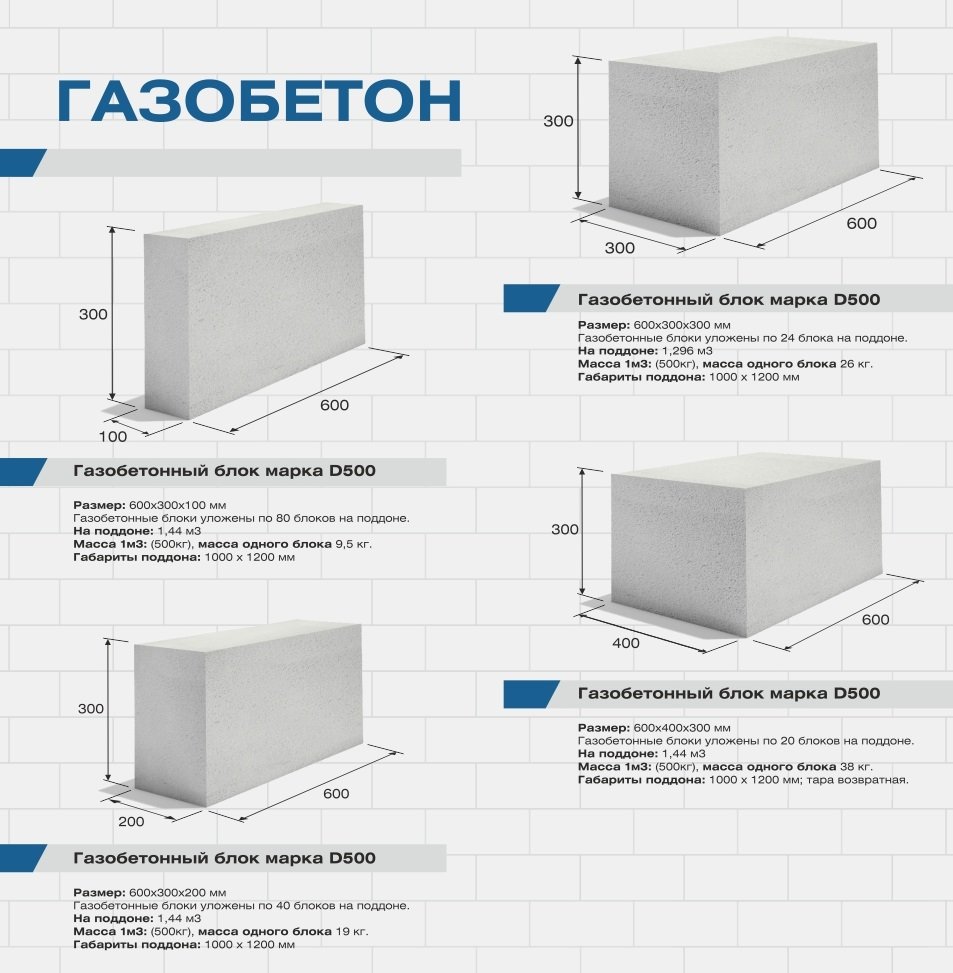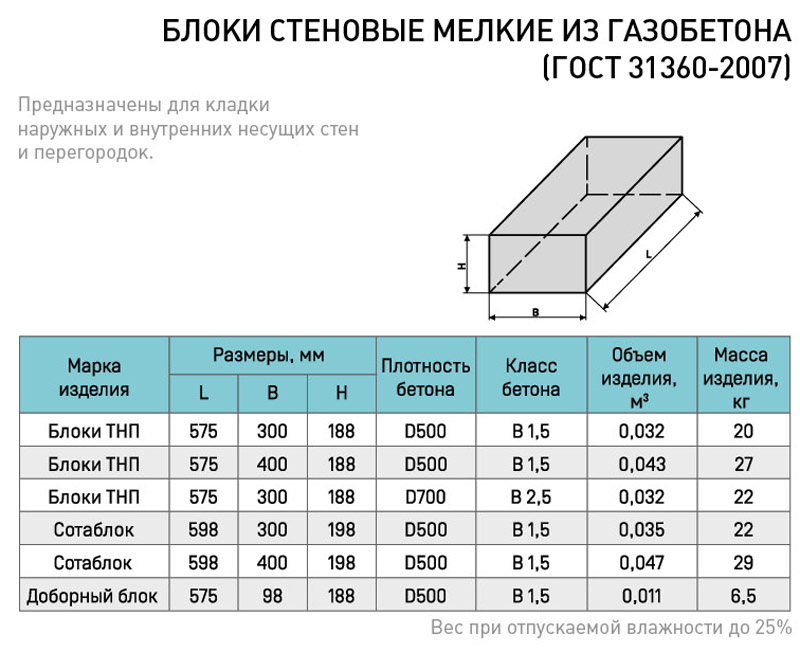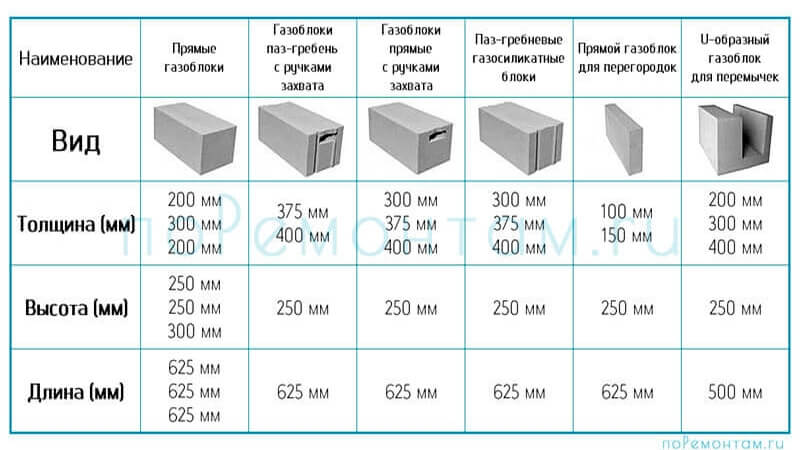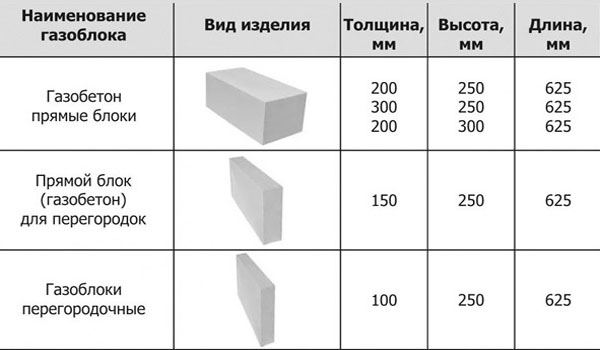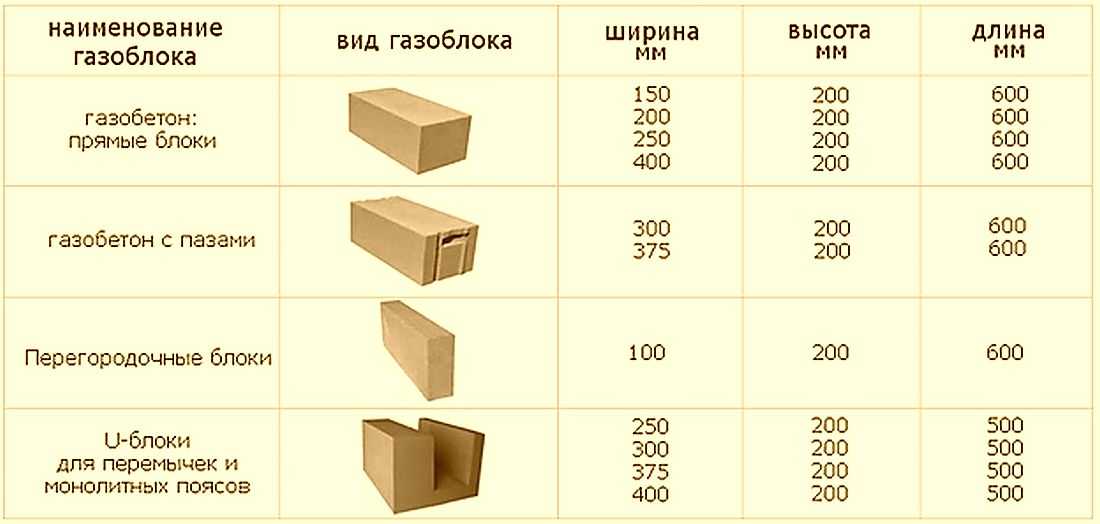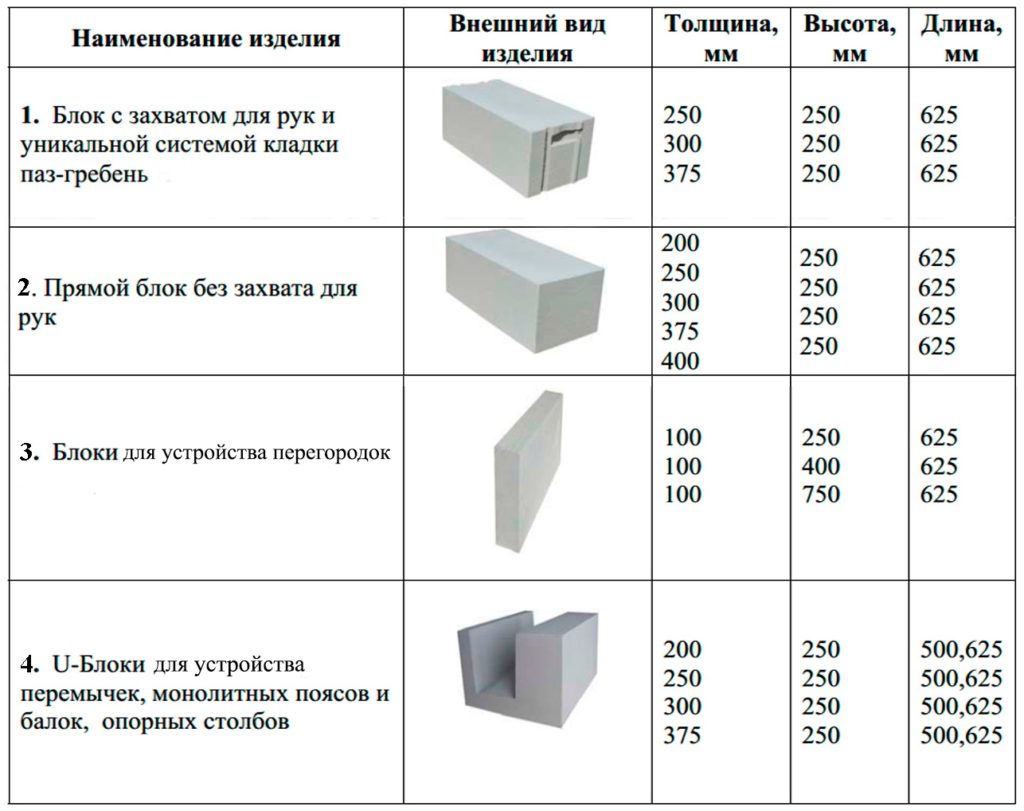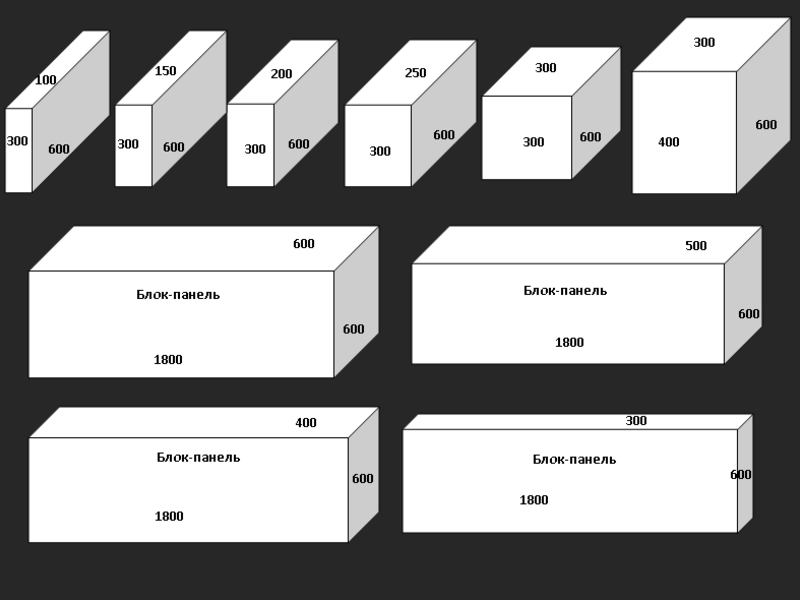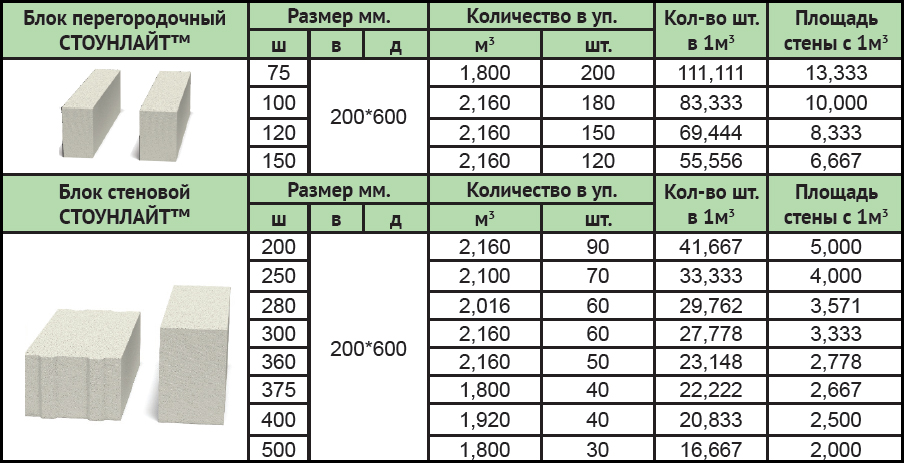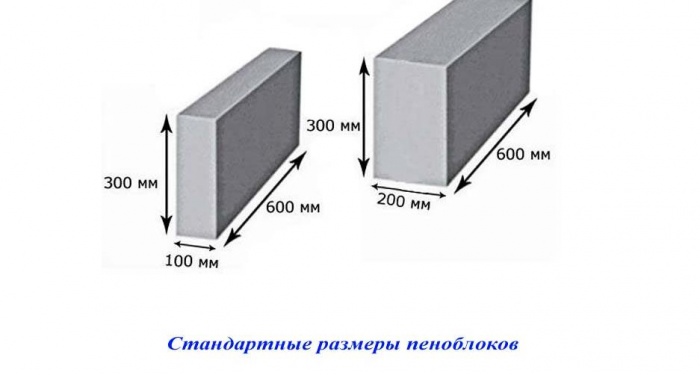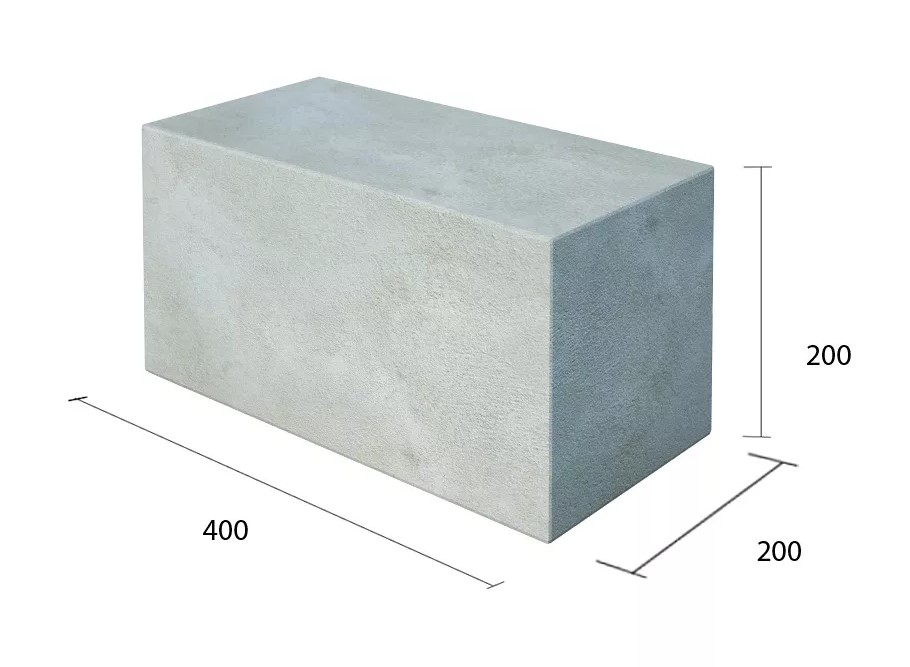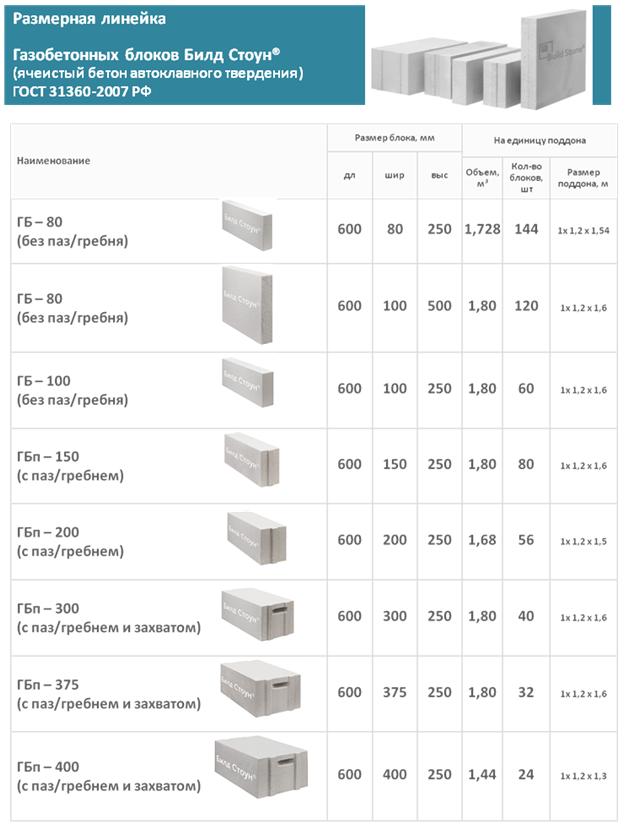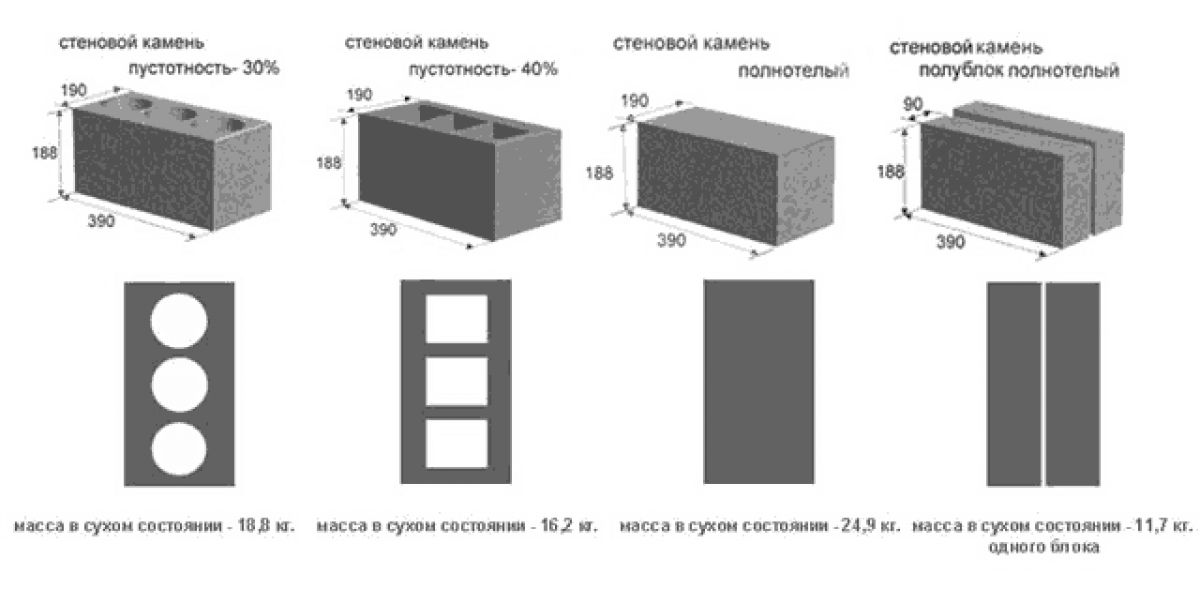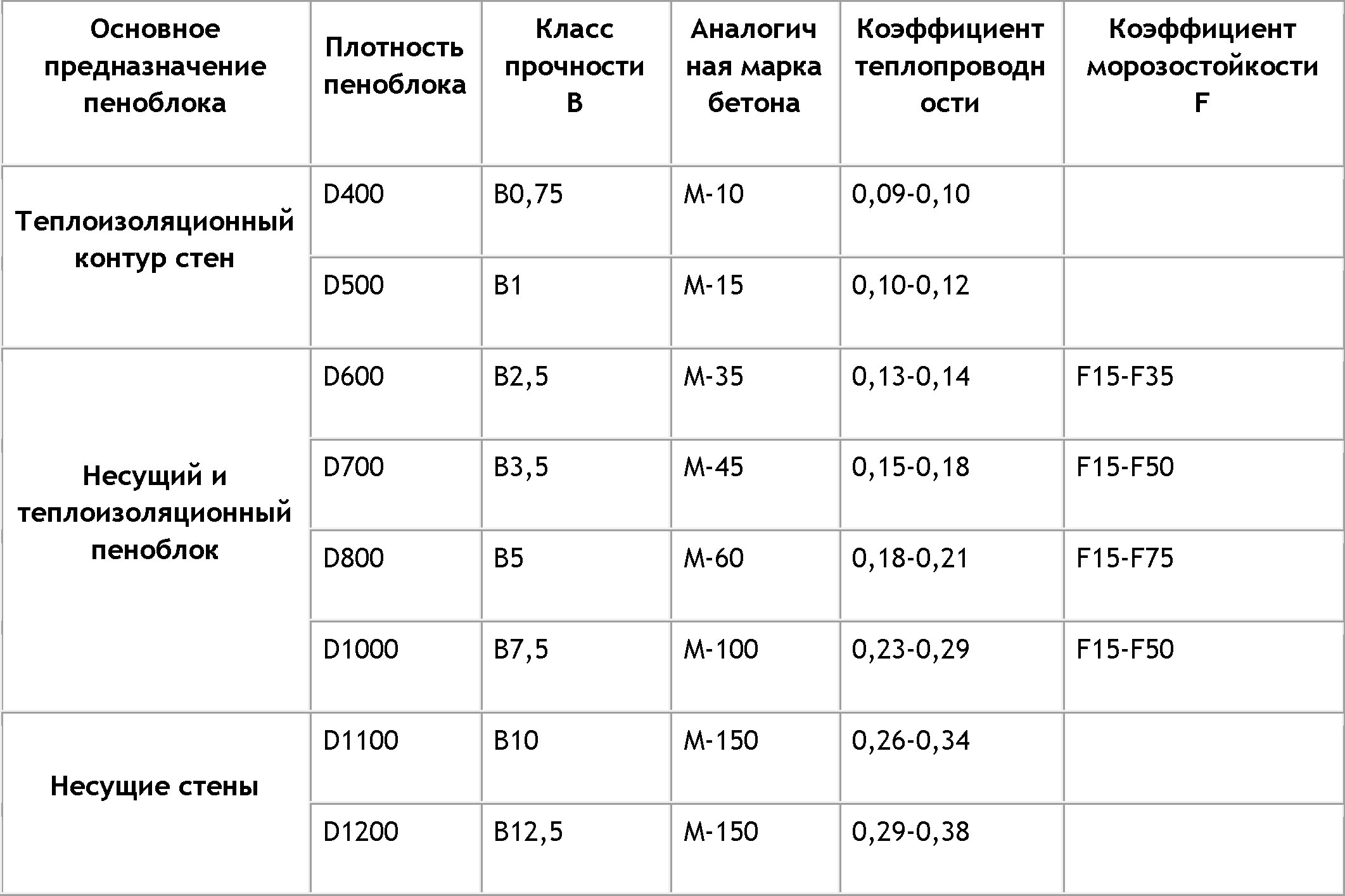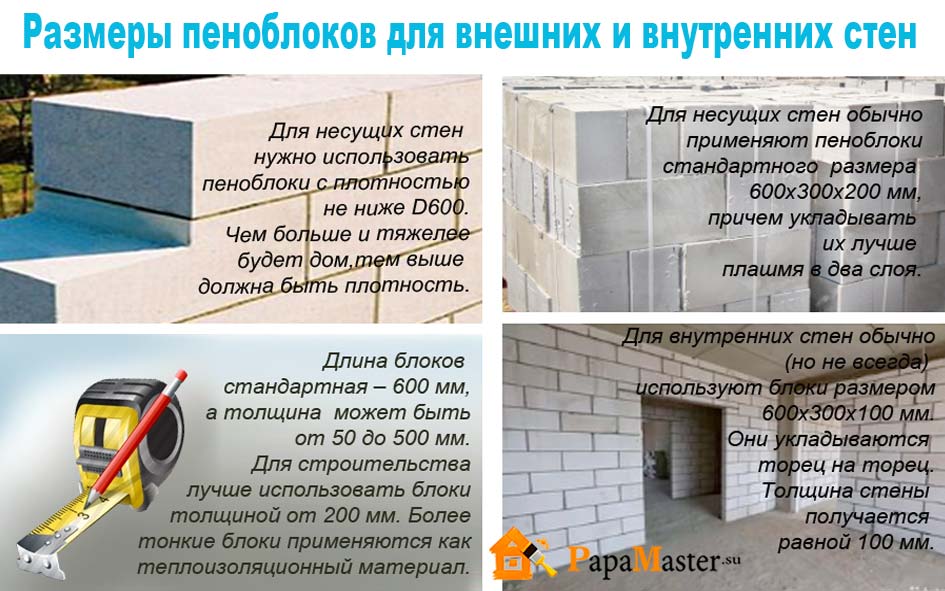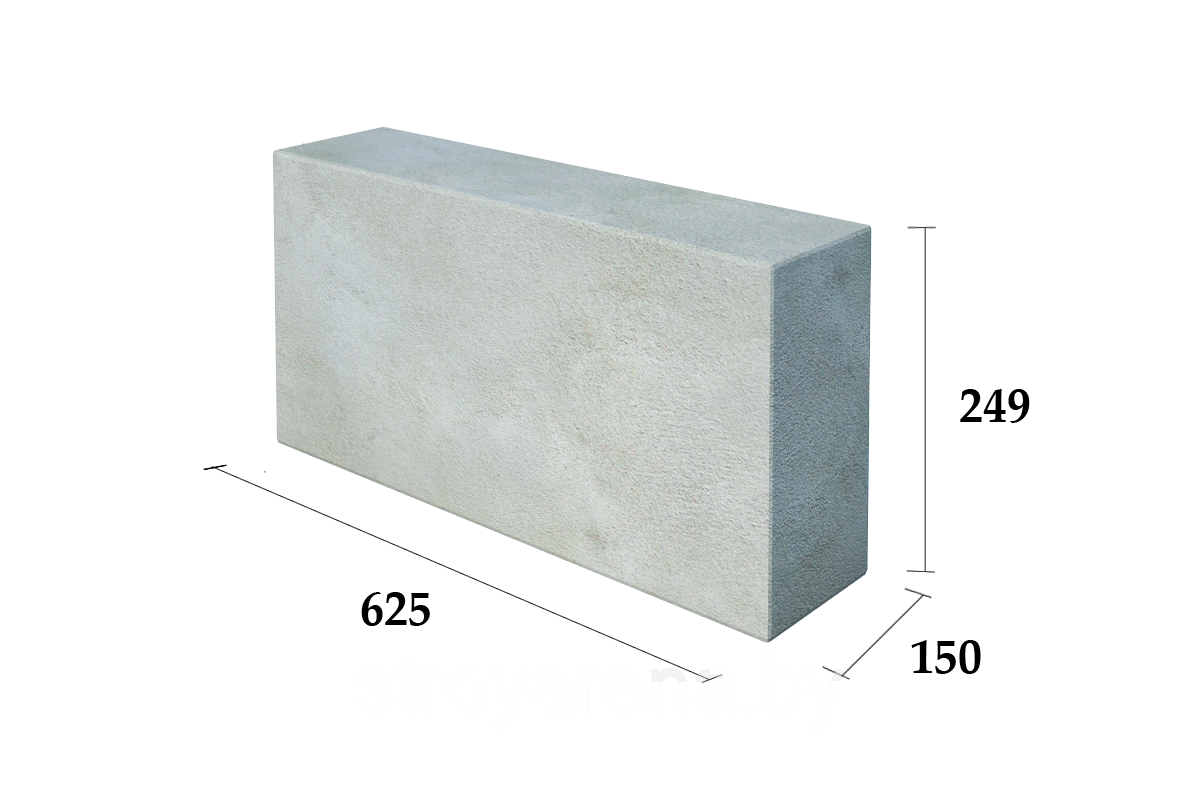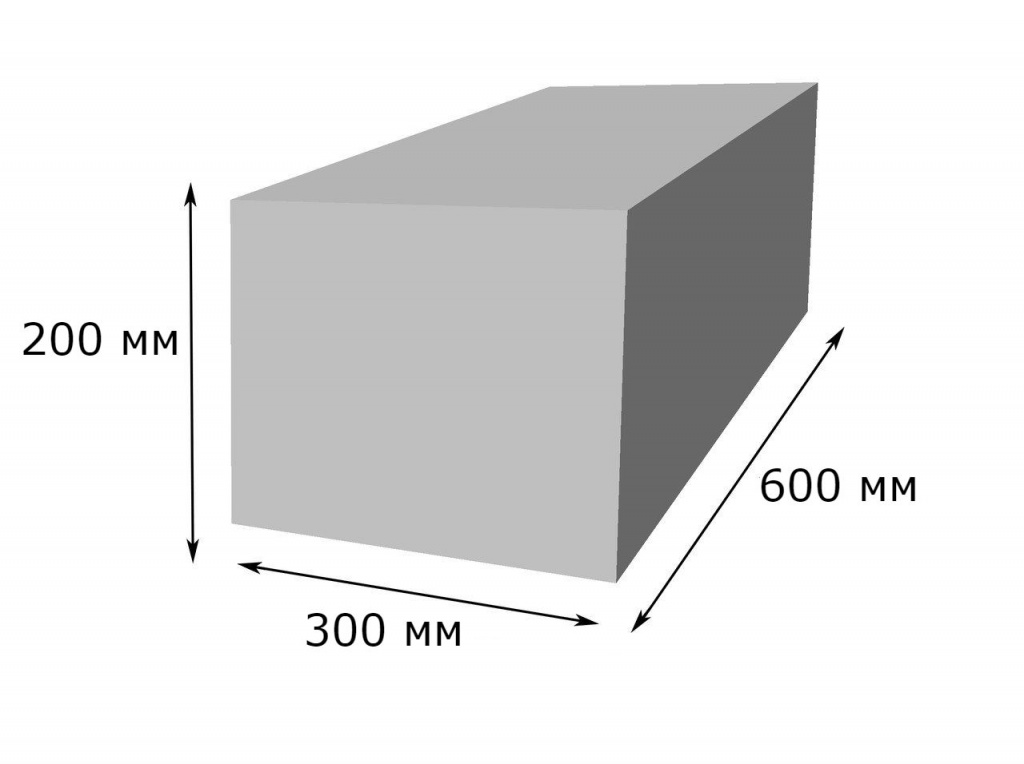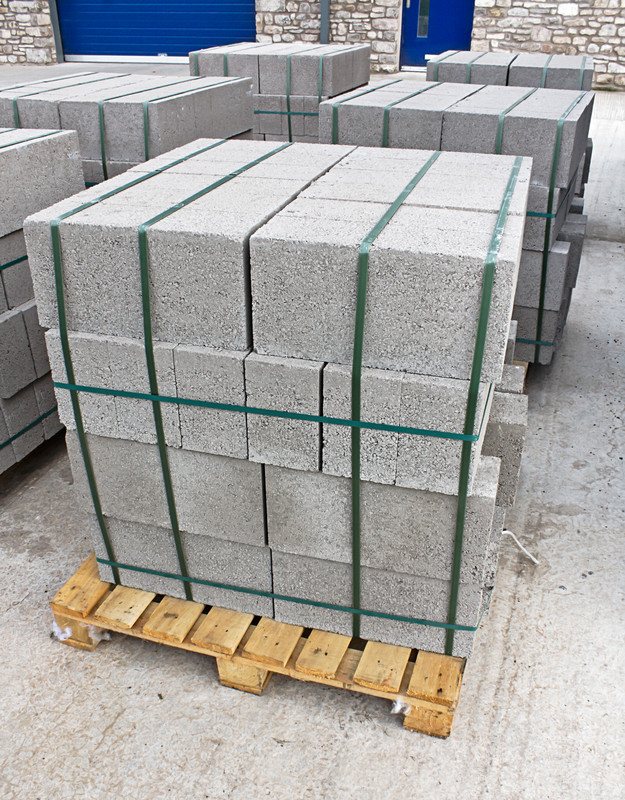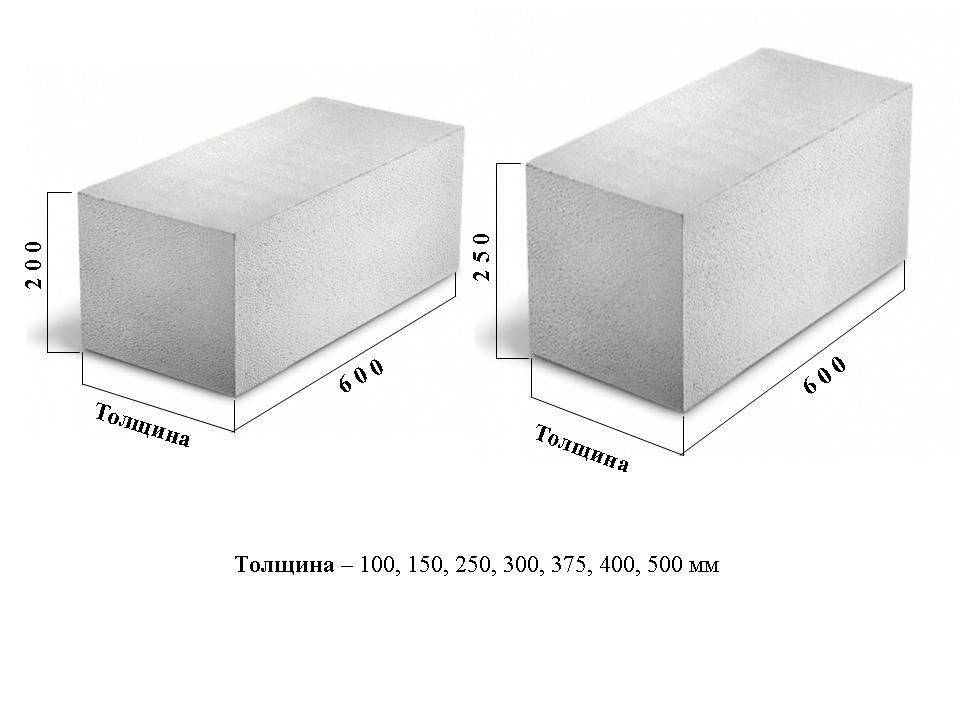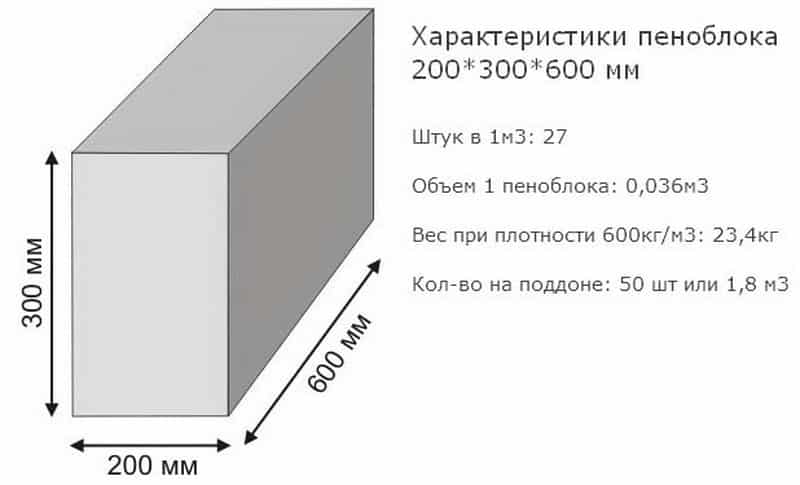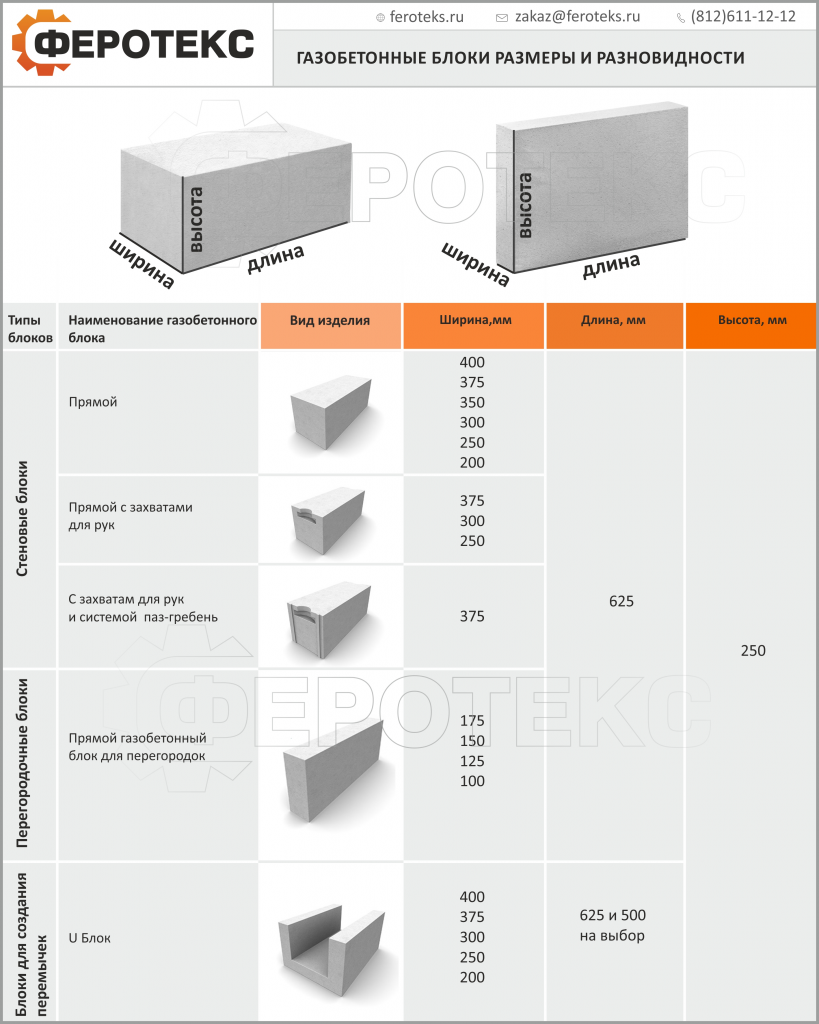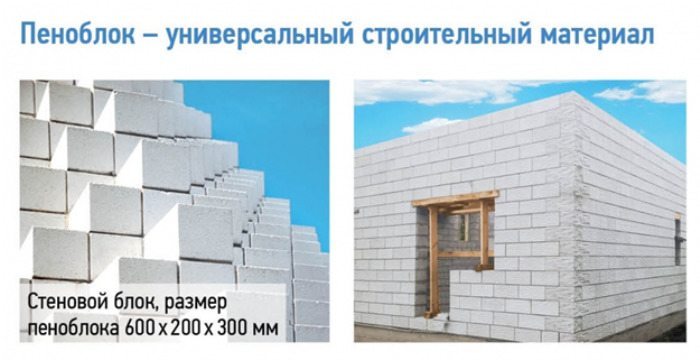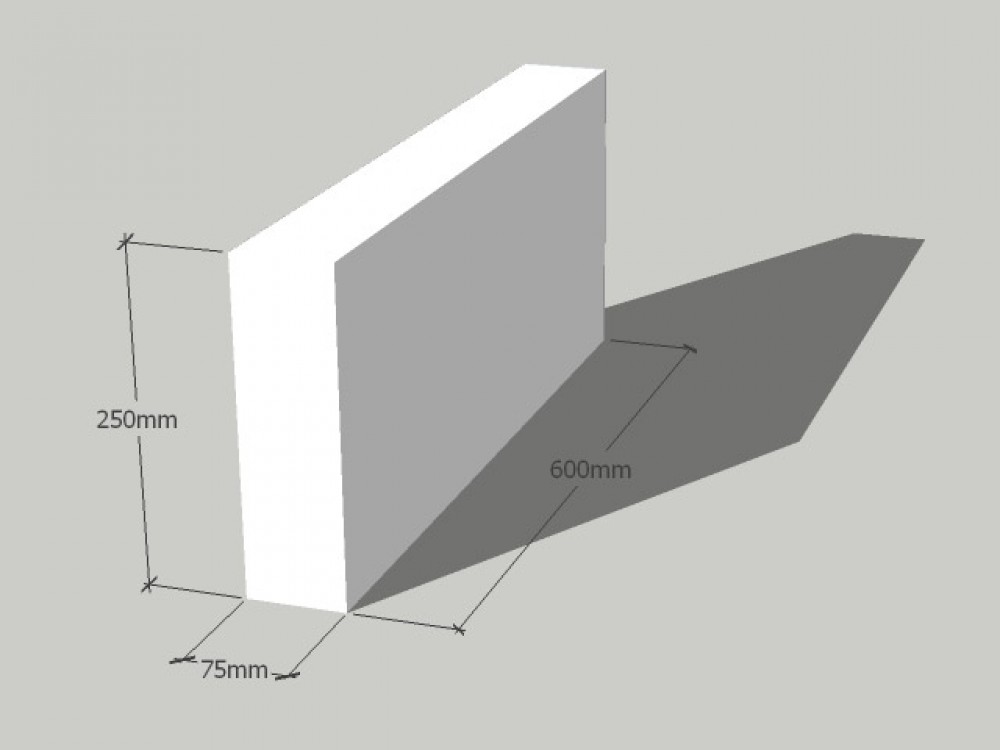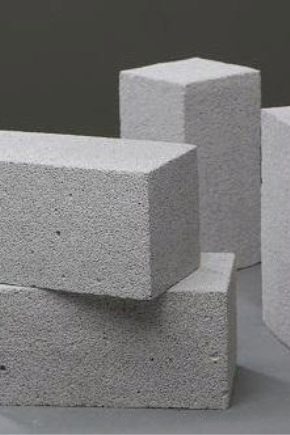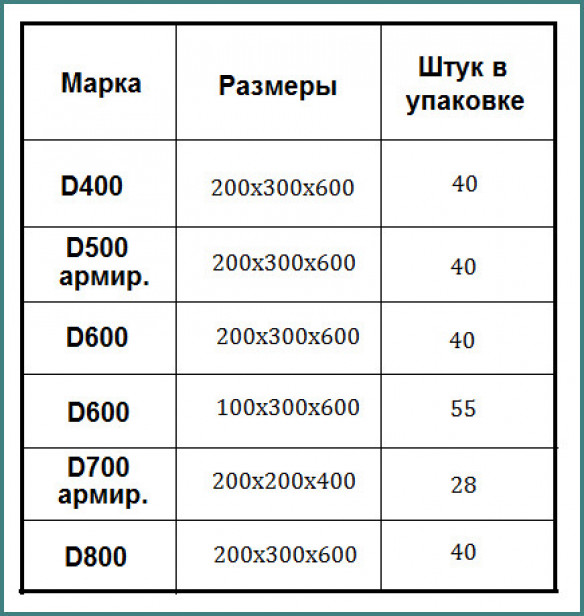What is foam concrete?
Foam concrete is a porous building material included in the group of cellular concrete. It is molded into rectangular blocks. Consists of a mixture of cement, water and sand. Some manufacturers add clay, ash or other fine-grained components to make products cheap. But this negatively affects the strength characteristics of the material.
Foam concrete is often confused with aerated concrete. These types of blocks differ in manufacturing technology. Pores in aerated concrete are formed by mixing a concrete solution with a foaming agent. In aerated concrete, voids are formed in the course of chemical reactions.

The foam can be of natural or synthetic origin. In the first case, protein compounds are used. Such a foam concrete block is durable and environmentally friendly. But it will also cost a lot. The material based on synthetic foam is only slightly inferior in strength characteristics, which is successfully compensated for by its cost.
Block production is carried out in two ways. The first is cutting the monolith into pieces of the required size. The second is pouring the solution into metal molds. The material freezes naturally. It is easy to make blocks, and therefore a huge number of companies are engaged in this in our country.

Stamps
Foam blocks for building a house have different densities. Depending on this indicator, a corresponding marking is applied to each product. It is denoted by the symbol D and a number behind which the weight of one cubic meter of material is encrypted. So 1 cubic meter of D300 blocks weighs 300 kg. Each grade has its own strength class. Only blocks of grade below D400 are not standardized for this indicator.
All foam concrete blocks can be divided into four main groups. Their characteristics are shown in the table.
|
Group |
Foam concrete brand |
Strength class |
Compressive strength of the material, kg / cm2 |
|
Heat insulating |
D150 |
Not standardized |
— |
|
D 300 |
|||
|
D 400 |
B 0.75 |
9,00 |
|
|
Structural and thermal insulation |
D500 |
B1 |
13,00 |
|
D600 |
B2 |
16,00 |
|
|
D700 |
B2.5 |
24,00 |
|
|
D800 |
B3.5 |
27,00 |
|
|
D900 |
B5 |
35,00 |
|
|
Structural |
D1000 |
B7.5 |
50,00 |
|
D1100 |
B10 |
64,00 |
|
|
D1200 |
B12.5 |
90,00 |
In addition, there is a group of structural and production foam blocks. It is labeled from D1300 to D1600. But such material is made to order in limited quantities. Its characteristics are not standardized.

Specifications
The characteristics of foam concrete blocks are regulated by the standards of GOST 25485-89. It prescribes the specific ratio of the components of the solution used in the manufacture of the material, density, thermal conductivity, frost resistance of the finished product and other parameters.
Only products that meet the requirements of GOST are recognized as quality. This is confirmed by certificates of conformity and other accompanying documents. In addition, the products undergo additional fire safety tests. If the seller refuses to provide the buyer with a complete set of papers for the goods, then it is better to refrain from buying.

Areas of use
Today, foam concrete blocks are widely used in various sectors of construction. Among their main areas of application are:
-
Erection of load-bearing walls of buildings.
-
Arrangement of partitions inside the premises.
-
Thermal insulation of finished structures. For this purpose, a material of minimum density is used.
Foam blocks are used for the construction of residential buildings, as well as garages, baths, outbuildings. With their help, you can build a summer kitchen or a gazebo on your site in just a few days. They are also chosen for organizing an extension to an already finished house.

How to choose the size of the foam block for partitions
To ensure the compliance of interior partitions, kitchens, bathrooms and inter-apartment walls with the requirements of legislation and SNiP, manufacturers produce six standard sizes of blocks, ranging from 50 to 125 mm in width and from 195 to 300 mm in height. The length of the foam block, as a rule, is 600 mm. If necessary, foam blocks of a different size can be made by manufacturers on an individual order.
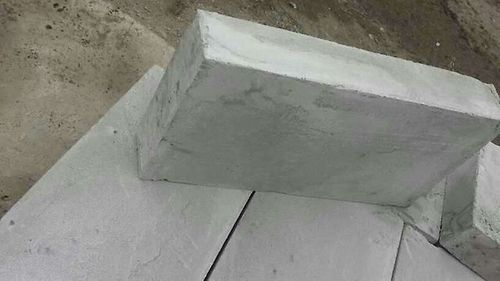
For the construction of walls of bathrooms and light partitions on balconies and loggias, foam blocks with a thickness of 50 and 75 mm are mainly used, which provide the necessary strength with small wall sizes and the installation of additional reinforcing belts in the form of wire or reinforcement with a diameter of 6-8 mm. Such masonry has sufficient soundproofing properties and allows the necessary communications to be hidden.
Interior partitions are mounted from a thicker partition block with a thickness of at least 100 mm. This size is due to the rather large dimensions of the wall and higher requirements for bearing capacity. This size also fits well with doors of any manufacturers, the standard frame width of which does not exceed 100 mm and the door frame can be installed without the use of an additional board, which improves the appearance of the installed doors.
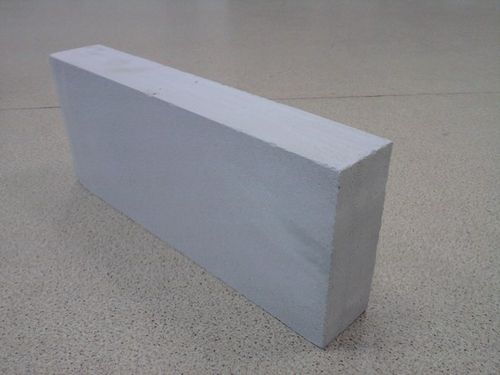
Prices for foam blocks
The cost of foam blocks in Moscow and the regions is different. Pricing is influenced by the quality of the material, its properties, and the dimensions of the products. Structural blocks are more expensive. Their price reaches 4500 rubles. for 1 m³. Structural and thermal insulation material costs in the range of 3200-3800 rubles. for 1 m³. The price of thermal insulation products is much lower. The upper limit of the cost range is 3000 rubles. for 1 m³.
The higher the quality of the blocks, the stronger the difference in price is felt compared to the simpler material. In addition, the price is too low.
Such material can quickly sell out at an affordable price, since it did not gain strength or low-quality cement was used in the production. There is a risk of purchasing such products at a high cost, so you need to ask about the availability of accompanying documentation.
Tips & Tricks
If you decide to start building a house using popular foam concrete blocks, then you need to take into account not only their dimensional parameters and weight, but also some useful recommendations from experts:
It is only necessary to transport foam concrete blocks in a truck. It is not recommended to turn to self-pickup using a trailer, because this way you can spend a lot on gasoline - you simply won't be able to take away many foam blocks in one "trip".
It is recommended to purchase a cut foam block, which is a separate cut elements from aerated concrete mass
The mold blocks do not have the same exact and correct dimensions, and their edges are usually very fragile.
If you pay due attention to the heat resistance of the walls, then you should purchase foam concrete with the D600 marking. High-strength materials D1100 are bought less often - they are more durable, but less heat-resistant.
When purchasing foam block materials, it is recommended to stock up on reinforcing tabs.
Always pay attention to the color of the building material. The foam block should be painted light gray
Never buy a white or yellowish block.
It is not recommended to purchase foam concrete blocks in the spring. They are often cheaper during this period. However, perhaps you will be provided with last year's materials, which all this time lay under a layer of dust in a warehouse or even in the open air. Such blocks are less sturdy and reliable.
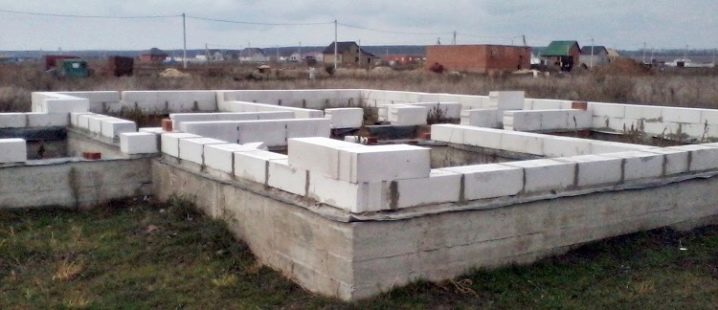
- Despite the fact that the foam block is a material that does not require additional finishing, it is still recommended to cover it with a special plaster from the inside or a cement-sand mixture for external surfaces.The strength characteristics of unfinished blocks can be reduced after several autumn / spring months.
- Before buying foam concrete blocks, you should check their geometry. To do this, you need to put two foam blocks on top of each other and consider whether they match. Then these elements must be turned over and the location of the remaining surfaces must be compared.
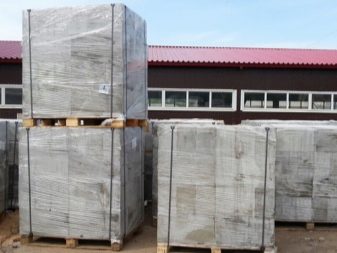
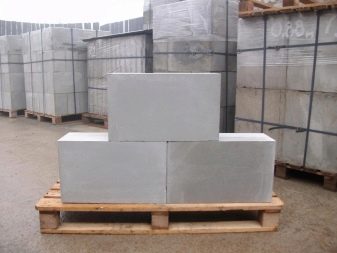
Unload aerated concrete blocks as carefully and carefully as possible
Otherwise, you risk seriously damaging them in the places where the edges pass (these areas are especially vulnerable).
When choosing a foam block for construction work, you need to pay special attention to its cells. Remember - they must be isolated (must not be connected to each other)
Otherwise, such building materials will actively absorb dampness and moisture, which will negatively affect their performance.
Check the foam block for strength. To do this, it is enough to try to break off a piece from the edge with your hands. If you succeed in doing this, then this means that the material is of low quality and is not worth buying.
It is recommended to build houses or outbuildings from foam blocks at temperatures from 5 to 25 degrees. If the construction still takes place at minus values, then it is recommended to use special antifreeze additives.
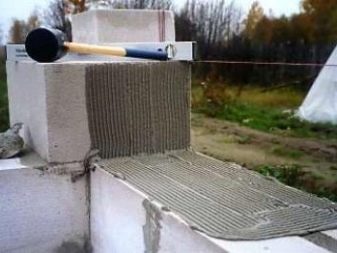
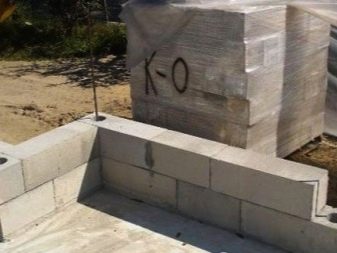
Many homeowners are wondering what materials can be used for facing a foam block, in addition to the usual plaster or decorative facade mixtures. To do this, it is permissible to use a special tile or stone (both natural and artificial).
If you have not yet completed all construction work, then you should not leave foam blocks in the open air on the street.
It is advisable to cover them with plastic wrap to protect them from negative external factors.
When laying interior partitions or load-bearing walls, it is very important to ensure that no voids remain between the individual foam blocks. All remaining seams must be sealed with special glue.
Thus, you can avoid the problem of heat loss in the home.
Do not skimp on buying foam blocks. These materials are already cheap, and in the pursuit of unnecessary savings, you risk buying unreliable and too fragile materials.

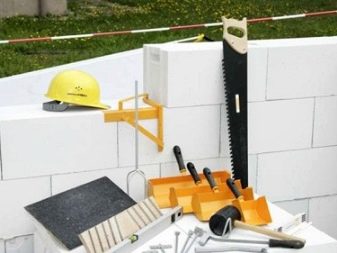
See below for details.
General material statements
 Dependence of weight on the technical characteristics of the foam block
Dependence of weight on the technical characteristics of the foam block
The raw material components of foam concrete are sand, cement binder, water, aluminum powder, it is used as a foaming agent. The material also contains additional elements: fiber and plasticizer.
When building a two-story house with hollow-core floor slabs, it is recommended to use blocks of the d600 brand. To prevent the destruction of the material from loads, a reinforced concrete belt is mounted in the upper part of the load-bearing walls before laying the floor slabs.
The weight of the D600 foam block, convenient overall dimensions make this material the best choice for private construction. When laying a wall, the block replaces several red bricks, which speeds up the process of building a house several times. Its weight is much lighter than similar material.
Foam concrete blocks of low grades, smaller from D600 through reduced density and low strength indicators, are not used for the construction of load-bearing walls, but they are used for laying partitions. The foam block contains more closed chambers with air in its structure, which improves the thermal insulation qualities of the walls.
When choosing foam concrete for private construction, one should point out its difference with aerated concrete blocks. The structure of the products is also porous, the density has similar parameters, but the air chambers are closed here. The specified building material is superior to aerated concrete in terms of frost resistance and thermal insulation properties. The structure of the blocks is not destroyed even when used in humid rooms or under the influence of sudden temperature changes.In addition, foam blocks are made from high-quality environmentally friendly raw materials, do not absorb moisture. Many consumers make their choice in favor of foam concrete.
A specific example of the calculation
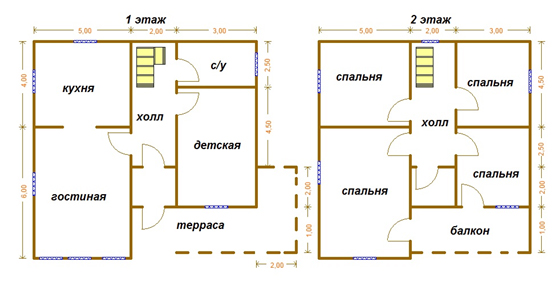 The project of a two-story house from foam blocks
The project of a two-story house from foam blocks
The calculation of the number of foam blocks for buildings with overall dimensions of 10 by 10, 8 * 8, 8 * 9, as well as 6 by 6 meters is the same. For example, let's take a two-storey residential building with dimensions of 10 * -10 meters. The building has an entrance hall, several bedrooms, a toilet, a kitchen and a living room.
The calculation will be carried out according to the following initial data:
- The height of the floor is 3 meters.
- The house has 12 windows with a total area of 18m2, as well as 9 doors, 2 of which are on the internal load-bearing walls and 6 on the partitions. The entrance door is located on the load-bearing wall of the first floor and has an area of 2.1 m2.
- The width of the external load-bearing walls is 40 centimeters or 0.4 meters.
- The dimensions of the internal load-bearing walls correspond to 30 centimeters or 0.3 meters.
- The width of the partitions is 10 centimeters or 0.1 m.
First, let's find out the total volume of masonry for the external load-bearing walls. Knowing the perimeter of the house and 40 meters and the height of two floors of 6 meters, you can easily determine the area of the load-bearing wall without taking into account window and door openings. 40 * 6 * = 240m2. Subtract the area of windows and doors from this value. 240-18-2.1 = 219.9 m2. Now we calculate the volume of foam concrete 219.9 * 0.4 = 88 cubes, hence the amount of wall materials with a foam block size of 60 * 30 * 20 centimeters will equal 88 / 0.036 = 2440 pieces with an addition for battle and other damage of 2690 copies.
We calculate the number of blocks for internal load-bearing walls. Such structures are used to hold interfloor floor slabs, so their length will be equal to one of the sides of the room 10 meters. The load-bearing inner wall is installed on the ground floor and has a height of 3 meters. The total area of the structure is 10 * 3 = 30m2. From this value, you need to subtract the area of two interior doors 1.5m2 in the amount of 30-1.5 = 28.5, hence the volume of the wall is 28.5 * 0.3 = 8.55m3. In this case, the number of wall foam blocks will be 8.55 / 0.036 = 240 pieces, taking into account the battle of 268 copies.
The total length of the partitions depends on the project of the residential building. Let's take the length of such structures on two floors of the building equal to 50 meters. In this case, their total area will be 50 * 3 = 150m2. Let's throw out from here the area of 6 interior doors is approximately 10m2 - 150-10 = 140m2. From here we find out the volume of the wall 140 * 01 = 14m3 and the required number of blocks - 14 / 0.018 = 777 pieces plus the number per battle - 854 pieces.
In general, 374 wall blocks and 854 partition foam blocks will go to our two-story residential building with the specified parameters. As we can see, it is quite simple to calculate the amount of material, the main thing is to know the initial data.
A sore point for many users is the price of building materials. Usually, the cost of such products is taken per cubic meter of products. The price of a cubic meter of wall foam blocks ranges from 2500 to 3500 rubles. And now let's determine the total cost of our house 88 + 8.55 + 14 = 110.5 the total volume of the walls. The minimum price for supporting structures and partitions is 2500 * 110.5 = 276,250 rubles.
Choosing foam concrete correctly - selection criteria
1. First of all, look at exactly who makes these foam blocks. Ask for a certificate, check the terms of delivery and compliance of the products with GOSTs. If a manufacturer openly provides as much information as possible, then he has nothing to hide, and the material is of proper quality. By the way, this is what large firms, reliable and well-proven, do. A good foam block manufacturer usually has a production area of at least 180 square meters with a block cutter. Moreover, the production area must be heated and have a roof.
2. Price matters too. On average, for the D800 brand, it is about $ 80 per cubic meter. If the material is much cheaper, you should think about it - this can affect the quality.
3. Inspect the blocks carefully - they should not be pure and bright white.Technology will not allow this. Normally, foam concrete should be grayish, slightly lighter or darker, and non-uniformity of the surface color is not allowed.
4. Check how tight the aerated concrete cells are. If they join together, moisture will easily penetrate into the material. Split one block and see if its structure is the same on the outside and inside. The cells must be round, the presence of chips or cracks is unacceptable.
5. To lay the walls without any problems, the blocks must be strictly rectangular - check this. Putting two foam blocks one on top of the other, try to shake them, see if there are any gaps
Moreover, examine all four sides of the blocks - this is important, since there can be a flaw on only one side. And in the future it can take a lot of your time, and spoil your nerves.
6. Having bought fresh material, do not immediately use it for the construction of walls. After all, foam concrete blocks will acquire the necessary strength and other technical characteristics only 28 days after production. Therefore, the most correct solution would be to withstand the purchased foam concrete for two or three weeks. In this case, he must either be well sheltered from moisture, or be indoors. This will help you get out of trouble if underexposed material has been sold to you.
An example of improperly organized storage of foam blocks, from above they are not covered with anything and it is already clear that moisture has been saturated from damp earth.
Types and sizes of foam blocks
One of the main characteristics of a foam concrete block in its marking is indicated by the letter "B" and a number from 0.5 to 60. This is an indicator of strength, ie. load in kg / cm2 that this foam block is able to withstand under compression. The higher this index, the more weight the building material in question can hold on itself without destroying its integrity. If the house is being built on two floors, then it is best to take blocks with the highest strength for the first floor, and for the second with a lower one.
The first parameter is directly related to the brand of foam concrete "M" in the same marking. The figure in its designation is calculated according to the formula "strength value B" * 10 / 0.7 rounded to the nearest whole number. The second criterion in the classification is their average density (MPa), which is expressed in the product name with the letter "D" and a value from 300 to 1200.
By density and purpose, they are divided into three groups:
-
Thermal insulation - D300 (B0.35 or B0.75), D400 (B0.75; B1 or B2) and D500 (B1.5; B2; B2.5 or B3.5).
-
Structural and thermal insulation - D600 (B2; B2.5; B3.5 or B5), D700 (B2; B2.5; B3.5 or B5), D800 (B2.5, B3.5, B5 or B7.5) and D900 (B2.5; B3.5; B5 or B7.5).
-
Structural - D1000 (B5 or B7.5), D1100 (B7.5 or B10) and D1200 (B10 or B12.5).
Frost resistance of the foam block is designated from F15 to F75. Products marked F15 – F25 are intended for the construction of internal partitions of the house, and from F25 and higher are already recommended for the construction of external walls.
Depending on the average density and size, foam concrete blocks are divided into 10 types with the designation in the marking from I to X. For example, a foam block of type "I" has the following dimensions: height 188 mm, width 300 mm and length 588 mm. In terms of density, it can be made with the D500, D600 or D700 brand. For the block of type "V" GOST established the dimensions 288x250x288 mm and any class D from 300 to 1200. And the foam concrete product "X" has overall dimensions 88x200x398 mm and density only D1200.

Sizes of foam blocks
Foam block size table
| Dimensions, mm | Pieces per 1 cubic meter | Quantity on a pallet | Number of masonry per 1 sq. M |
|---|---|---|---|
| 600x300x100 | 55 | 80 | 16,7 |
| 600x300x120 | 46 | 64 | 13,8 |
| 600x300x150 | 37 | 48 | 11,2 |
| 600x300x200 | 27 | 40 | 8,4 |
| 600x300x250 | 22 | 32 | 6,7 |
The structure of the partition made of foam concrete
Foam blocks for partitions are laid according to a similar principle as a brick. Initially, it is worth determining whether the partition foam block is suitable for the task at hand. The material is based on foam concrete with high insulating qualities, but low bearing capacity. It is practical to use and durable.
 Partitions from foam blocks
Partitions from foam blocks
The characteristics of foam concrete blocks give the material numerous advantages:
- when laying partitions from foam blocks, laying is very simple and with minimal time costs, the process is 2 times faster than building from bricks;
- it has good soundproofing and heat-insulating properties, it is easy to process.If the dimensions of the foam blocks for partitions are not suitable for the set purpose, then you can always easily cut off part of the element;
- inside it is easy to drill a hole for wires or pipes;
- helps to realize the design idea:
- multifaceted figures, rounded arches, etc., due to the flexibility to be handled by a hacksaw;
- due to the large thickness of the partitions and the blocks themselves, you can cut a doorway in them;
- foam blocks, and foam concrete in general, are suitable for decorative treatments:
- sanding, laying heavy tiles, plastering the surface, applying wallpaper, etc.;
- resistant to temperature extremes, chemical and biological fluids, moisture, ultraviolet light;
- the low price of the material makes it available to the masses;
- does not lead to the appearance of a large load on the foundation or supports.
 When laying partitions from foam blocks, laying is very simple and with minimal time costs
When laying partitions from foam blocks, laying is very simple and with minimal time costs
The disadvantage of the material is the likelihood of obtaining specimens with a curved shape. High requirements are imposed on the surfaces of the blocks, but only in relation to elements manufactured in production conditions, where GOST applies to dimensions and shapes. If the purchase is made in clandestine shops, it is better to buy more of the required number of blocks.
Pros and cons of foam concrete
Due to the constantly growing pace of construction, foam concrete blocks are actively gaining popularity. This became possible due to a wide range of their advantages:
-
High strength and reliability. Multi-storey buildings can be erected from such material.
-
Durability. The minimum service life of a finished building is 50 years.
-
Low weight. Thanks to this, the building process from blocks is greatly simplified. The involvement of serious special equipment is not required.
-
Low thermal conductivity. Heat stays inside the building for a long time, which reduces heating costs.
-
Frost resistance. They can withstand even extremely low temperatures.
-
Profitability. For construction from a foam block, several times less masonry mortar will be required than for a similar brick building. Transportation of material from store to site will also be cheaper.
The undoubted advantage of the material is its fire resistance. It does not ignite and does not support fire. Therefore, such buildings are considered safe.

The sizes of foam blocks are standardized. Thanks to this, it is easy to calculate the required amount of material and plan all the work. Products are easy to process: cutting, grinding, drilling and so on.
The advantage of building walls from foam blocks is the low cost of the material. In terms of price-quality ratio, foam concrete is a leader among analogues. And an additional plus is their soundproofing properties.
The advantage of the material is its environmental friendliness. It does not release any toxic chemical compounds into the air. There are rumors that unscrupulous manufacturers add waste from the metallurgical industry to foam concrete. But these facts have never been confirmed. Therefore, the construction of a house from foam blocks can be equated in safety with the use of natural wood.

Despite all the advantages, foam concrete is not devoid of disadvantages. The main one is its ability to absorb moisture. Therefore, the finished structure will require internal and external cladding.
After the end of construction from the foam block, it is recommended to wait several months before starting the finishing. The fact is that at this time the material still continues to gain strength due to the processes taking place inside it.
The blocks are lightweight and do not create an increased load on the base. But they can only be laid on a solid foundation.At the same time, it is still possible that after a few years the walls of the foam block will crack. Especially if the products of dubious quality were initially selected.
Read more about this in a short video.
Weight and strength of the foam block
Two material parameters that are directly related are weight and density. The partition block is subdivided into six grades of strength, corresponding to a certain density and weight, which are marked in the documentation with the Latin letter "B" and numbers from 1.5 to 4.
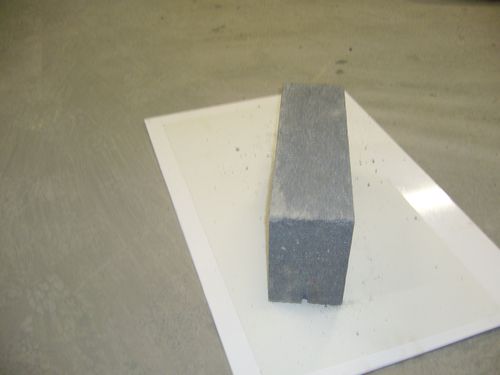
The density of the partition foam block can vary from 300 to 1200 kg / m3, which affects its weight and structural properties. As a rule, blocks with a density of 300 to 500 kg / m3 are called thermal insulating blocks and are used for thermal insulation of load-bearing walls. A block with a density of 600 to 900 kg / m3 is called structural and thermal insulation and is most often used in the construction of partitions, which is very clearly visible in the photo of the corner sections of the wall, when the ends of the blocks in the masonry are clearly visible.
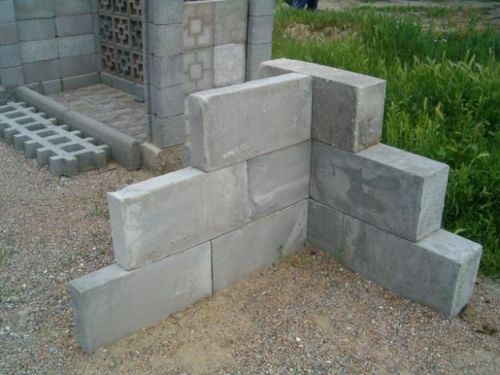

Installation of partitions from a foam block
For the installation of partition blocks, it is necessary to perform some preparatory operations, on which the quality of the future wall will depend:
- Buy high-quality glue for foam concrete, because it is not recommended to lay blocks on a simple cement-sand mortar;
- Prepare the necessary tool;
- Mark the position of the future wall. It is better to do this with a laser building level;
- Watch the training video, which shows in detail the sequence of operations for laying the partition foam block.
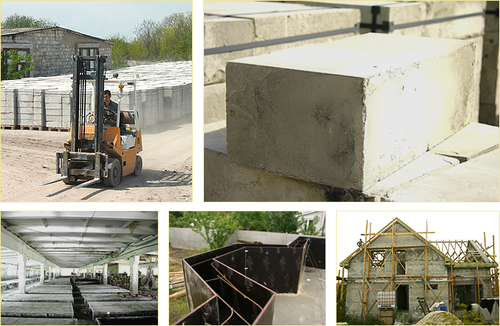
Feeling self-confidence and looking at the work of the masters, you can take your time to install the partition block on your own, since the properties of the material allow you to easily perform all operations without resorting to outside help. Evenly applying a thin, not more than 5 mm, layer of special glue, we lay the blocks on top of each other, observing the dressing of the seams, not forgetting about the reinforcing reinforcement and be sure to control the quality of the masonry using a building level or a plumb line.
Having laid the last row of blocks, we get a high-quality partition with an even rough surface, ready for applying a small layer of finishing materials.
Building a house from a foam block - what materials and tools will be required
List of building materials required for construction:
- blocks used as the main building material;
- special glue sold in loose form;
- reinforcing bars used in the reinforcement process.
Pre-purchased materials should be protected from moisture.
For construction work, various equipment and special tools will be required:
- a drill with a nozzle for mixing the glue mass;
- "Grinder" for cutting reinforcement and fine-tuning the geometry of block products;
- rubberized mallet for sealing foam blocks during laying;
- a planer for foam concrete, facilitating the leveling of irregularities;
- a hacksaw required for cutting foam concrete;
- a spatula with teeth for applying the composition;
- construction cord, which is a reference point when laying foam blocks;
- level for quality control of work performed;
- plumb line to control deviation from the vertical;
- capacious container for preparation of the working mixture;
- trowel with a flat working end for grouting.
For self-preparation of the foundation solution, you will also need a concrete mixer.
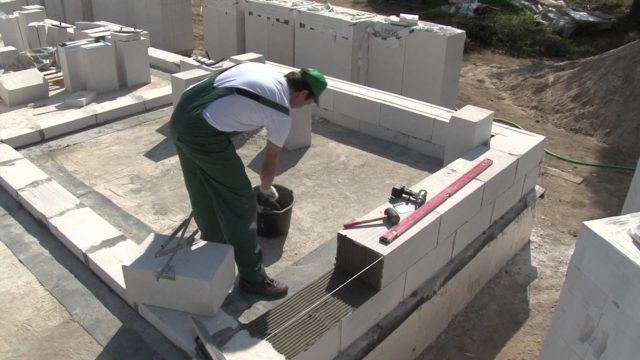 To cut the foam block, you do not need to use special tools, you can easily cut the material with a hacksaw
To cut the foam block, you do not need to use special tools, you can easily cut the material with a hacksaw

